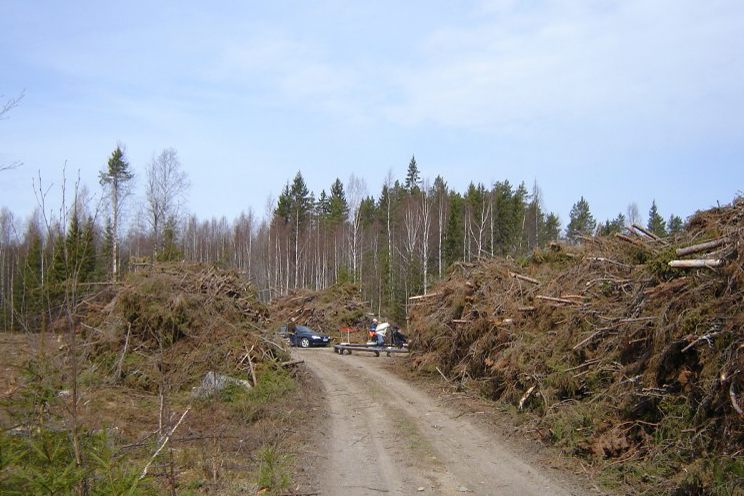
The quality of nature maintenance was evaluated as ’good’ or better in four out of five regeneration fellings or other forestry operations in Finland last year. Measured in cubic metres, the volume of retention trees decreased slightly. The greatest shortcomings were noted in the protection of waterways.
The PEFC forest certification system requires that 5–10 retention trees per hectare are left standing in connection with regeneration fellings. This number was actually exceeded last year: the average was over 11 per hectare, and the number had not decreased from the previous year. Four out of five retention trees were live.
On the other hand, measured in cubic metres the volume of retention trees decreased slightly, from 3.5 cubic metres per hectare in 2014 to 3.3 in 2015. This could also be seen in that the number of stout retention trees decreased.
The retention trees most valuable for nature management are the stoutest ones. Counted individually, 35 percent of the retention trees were stout, and their share of the cubic volume was 60 percent. “In fact, there is room for improvement in the selection of retention trees,” says Mr. Jarkko Partanen, chief of finance and inspection at the Forest Centre, which carried out the evaluation.
As regards the protection of waterways, the greatest shortcomings were linked with soil preparation. “In ditch mounding, for example, similar protection methods could be used as in refurbishment ditching, but on many sites no protection measures whatsoever had been taken,” says Partanen.
On the other hand, modern forestry machinery is so light in weight that it usually does not compress the soil very much. The only exception are the routes on which the timber is taken out of the forest, and here the compression is caused by the heavy loads rather than the machinery itself.
Attention on paperwork
The Forest Act defines several habitats with important nature values, the quality of which must not deteriorate in connection with forestry activities. A total of 129 such habitats were identified during the evaluation.
97 percent of these habitats had remained completely or very nearly in their previous condition. Just as in the previous year, shortcomings were observed with waterways, such as small streams and springs.
Finnish forest owners must notify the Forest Centre in advance of all logging plans. The notification must also include all nature management plans connected with the logging.
Partanen notes that the notifications could be improved in this respect. “In fewer than half of all notifications, the valuable habitats and the additional information required about them had been entered according to guidelines,” says Partanen.
Nowadays almost all of the timber harvested for energy use in connection with regeneration fellings consists of canopies and tree branches, and the harvesting of stumps is decreasing. According to the evaluation, the harvesting of canopies and branches usually complies with the guidelines, whereas the number of retention stumps is often too small in areas where stumps are harvested.
In addition, there were sites where decayed trees previously left in the forest to improve biodiversity had also been harvested, though this is not allowed, of course.
The Forest Centre monitors annually the quality of nature management on regeneration sites in private family forests in Finland. In 2015, a total of 362 logging sites were evaluated, with a combined area of 1,200 hectares. Depending on the year, the area evaluated is 0.5–1 percent of the total regeneration area in Finland.
Of the logging sites evaluated, 84 were selected specifically because of containing significant nature values.
Indicators used in evaluating nature management
- Number of sites placed under permanent protection: 538
- Total surface area of sites placed under permanent protection: 5,379 hectares
- Share (of total area) of very good or good results of loggings: 81 percent
- Number of retention trees per hectare: 11
- Volume of retention trees per hectare: 3.3 cubic metres
- Source: Finnish Forest Centre, 2015
